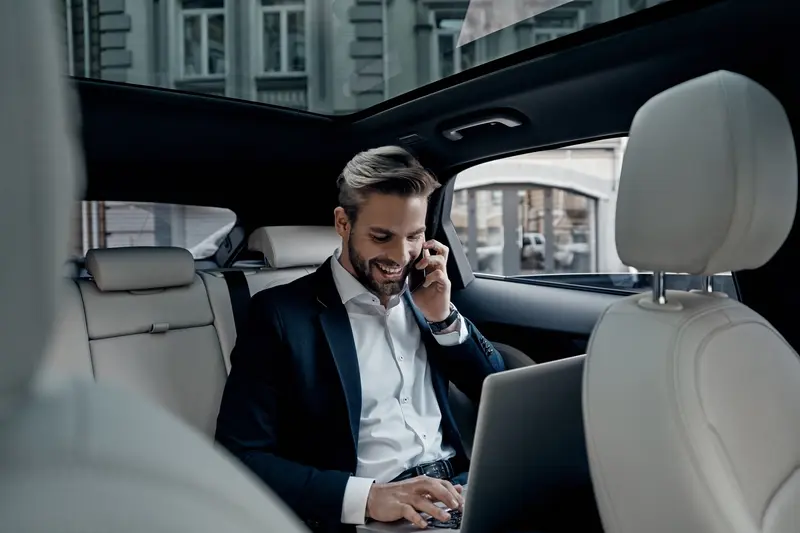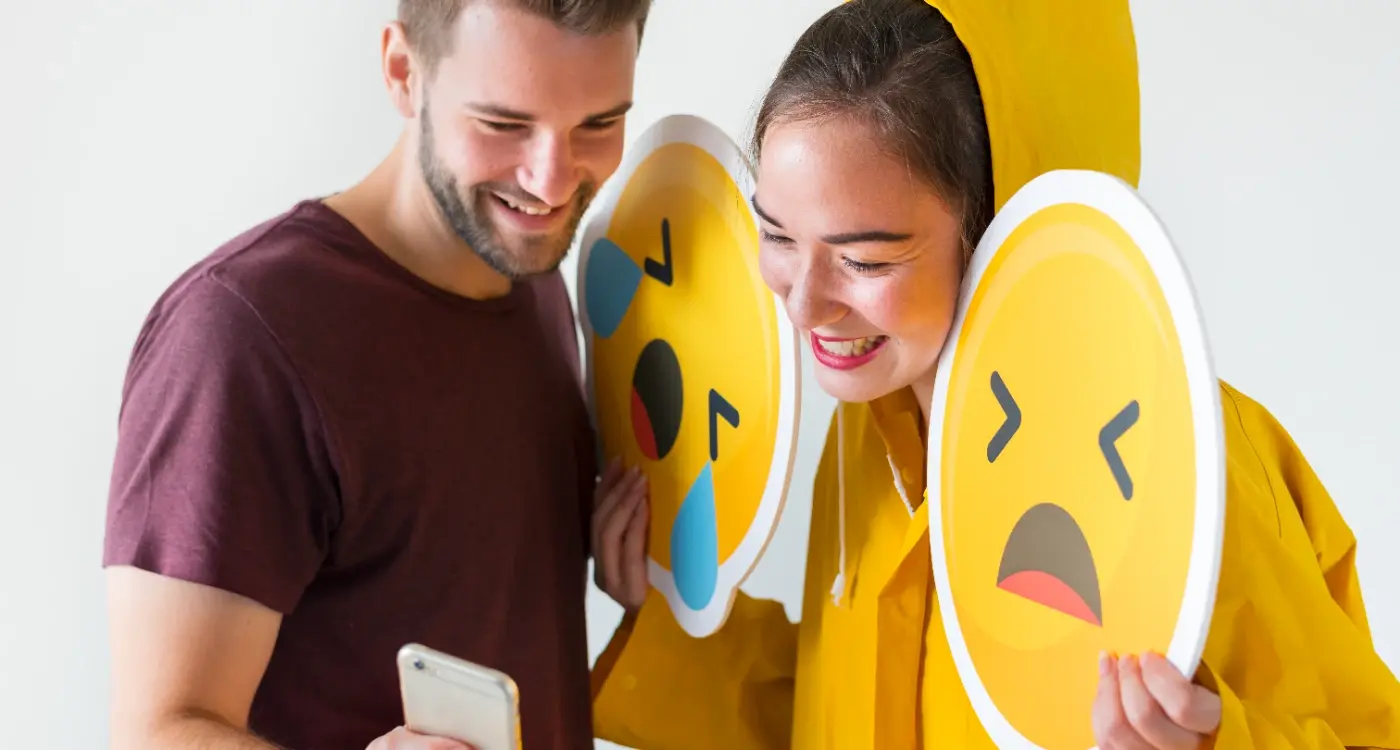Can A Mobile App Really Enhance A Luxury Shopping Experience?
I should come as no surprise that luxury shoppers spend an average of 79% more time researching products on their phones than regular shoppers do. They're not just browsing—they're hunting for that perfect item, checking authenticity, comparing materials, and making sure every detail matches their exacting standards. This behaviour tells us something fascinating about premium retail and how the customer journey has completely changed.
When we talk about luxury shopping, we're dealing with a completely different animal than your typical high street purchase. People aren't just buying a handbag or a watch—they're investing in a brand experience that should make them feel special, exclusive, and confident in their choice. The question is: can a mobile app really deliver that same feeling you get when you walk into a beautifully designed boutique with attentive staff who know your preferences?
The smartphone has become the new shop window for luxury brands, but most are still treating it like a basic catalogue instead of a premium experience
After working with premium retail brands for years, I've seen both spectacular successes and expensive failures when it comes to mobile apps. The brands that get it right understand that their app isn't just another sales channel—it's a direct extension of their brand identity and values. The ones that get it wrong? Well, they often end up with a glorified website that does nothing to justify their premium positioning.
What Makes Luxury Shopping Different From Regular Shopping
When you walk into a luxury shop, something feels different straight away. The lighting is softer, the music is quieter, and there's usually someone ready to help you who knows everything about what they're selling. That's not an accident—luxury shopping is designed to make you feel special.
Regular shopping is about getting what you need quickly and cheaply. You grab your items, pay at the till, and you're done. Luxury shopping works the opposite way. It's slower, more personal, and the whole experience matters just as much as what you're buying. The staff remember your name, they know what you bought last time, and they might even offer you a drink whilst you browse.
The Price Tag Changes Everything
When someone spends hundreds or thousands of pounds on something, they expect more than just a good product. They want to feel like they're getting something exclusive—something not everyone can have. This means luxury brands can't just focus on making great products; they need to create an entire experience around buying them.
The packaging is beautiful, the service is personal, and every detail is perfect. That's what people are really paying for when they buy luxury goods. Understanding what makes a mobile app feel premium and exclusive becomes crucial for translating this physical experience into the digital realm.
Why Mobile Apps Matter For Premium Retail Brands
I've worked with plenty of premium retail brands over the years, and there's one thing that always surprises me—how many still think a mobile app is just a fancy website in disguise. It's not. Your customers are already on their phones for hours every day, and when they're thinking about making a big purchase, they want something that feels special.
Think about it this way: when someone walks into a high-end store, they expect personal service, beautiful displays, and an experience that makes them feel valued. Your mobile app needs to do exactly the same thing. It's your digital shopfront, your personal stylist, and your VIP lounge all rolled into one.
The Power of Being In Someone's Pocket
A website sits there waiting for people to remember to visit it. An app lives on their phone, ready to serve them whenever inspiration strikes. That's powerful stuff for premium retail brands because luxury purchases often happen in moments—maybe they're scrolling through inspiration, or they've just seen something that caught their eye.
The customer journey for premium brands is different too. People don't just buy expensive things on impulse (well, not usually). They research, they compare, they dream about it. A well-designed app can guide them through this whole process while making them feel like they're part of something exclusive.
Start by mapping out your customer's typical journey from first interest to final purchase. This will help you understand where your app can add the most value. Consider whether different premium app models might work better for your specific luxury brand positioning.
How Apps Can Transform The Customer Journey From Browse To Buy
The traditional shopping experience starts with browsing, moves through consideration, and ends with purchase. But luxury shopping apps can completely reshape this journey—making it smoother, more personal, and frankly, more enjoyable. I've worked with premium brands who've seen their conversion rates double just by getting the right customer journey personalisation in their app.
Think about it: when someone opens your luxury app, they're already showing intent. They've downloaded it, they're engaged, and they're ready to explore. That's your golden moment to guide them from casual browsing to committed buying.
The Four Stages Apps Transform
Apps work their magic across four key stages of the luxury shopping journey. Each stage offers unique opportunities to connect with customers and move them closer to purchase.
- Discovery: Personalised recommendations based on browsing history and preferences
- Exploration: Rich product galleries, 360-degree views, and detailed craftsmanship stories
- Consideration: Wish lists, size guides, and expert styling advice
- Purchase: Seamless checkout, multiple payment options, and exclusive member pricing
What makes apps particularly powerful is their ability to remember where each customer left off. Unlike websites where people start fresh each time, apps can pick up conversations mid-flow. Your customer might browse handbags on Monday, save three to their wish list, and complete the purchase on Friday—all without losing momentum.
The best luxury apps I've seen don't just facilitate transactions; they create experiences that make customers want to return, browse, and ultimately buy again. When users aren't actively shopping, smart brands use empty states as brand experience opportunities to maintain engagement and reinforce their luxury positioning.
Building Trust And Exclusivity Through Mobile Technology
Trust doesn't come easy in luxury retail—customers are spending serious money and they need to feel confident about every part of their experience. When I'm working with premium retail brands, one of the biggest challenges we face is recreating that sense of exclusivity and personal service that you'd get walking into a high-end boutique.
The smart luxury brands are using their apps to create VIP-only sections where customers can access limited collections before anyone else. Think private viewing rooms, but on your phone. Some brands even use invitation-only app features where you need a special code to unlock certain products or services.
Creating Digital Scarcity
Scarcity works brilliantly in luxury—when something feels rare, it feels more valuable. Apps can create this feeling through limited-time offers that only appear for certain customers, or by showing real-time stock levels for exclusive items. I've seen brands use countdown timers for flash sales that only their app users can access.
The best luxury app experiences make customers feel like they're part of an exclusive club, not just another shopper browsing products
Security features matter too—biometric login, encrypted payment processing, and clear privacy policies all help build confidence. The customer journey from discovery to purchase needs to feel seamless and secure; any friction or doubt can kill a sale instantly when you're dealing with premium prices.
Making Shopping Personal With Smart App Features
I've worked with enough luxury brands to know that personalisation isn't just about slapping someone's name on a welcome screen—it's about creating experiences that feel genuinely tailored to each customer. The best luxury shopping apps I've helped build use smart features that learn from user behaviour and adapt accordingly.
Machine learning algorithms can track what customers browse, how long they spend looking at certain items, and what they've purchased before. This data builds a profile that gets smarter over time. When a customer opens the app, they see products curated specifically for their taste, not just what's trending with everyone else.
Smart Features That Actually Work
The most effective personalisation features I've seen include predictive recommendations based on purchase history, personalised styling advice that considers past preferences, and exclusive product drops tailored to individual customers. Some apps even use AI to suggest complete outfits or complementary items.
- Predictive product recommendations based on browsing patterns
- Personalised styling advice and outfit suggestions
- Exclusive early access to products matching customer preferences
- Custom size recommendations using previous purchase data
- Tailored content like styling tips and trend updates
The key is making these features feel natural rather than intrusive. When done right, customers don't even notice the technology—they just feel understood. Creating engaging tutorial content can help users discover and appreciate these personalised features without feeling overwhelmed.
Common Mistakes Luxury Brands Make With Their Apps
After working with premium retail brands for the better part of a decade, I've noticed some patterns in what goes wrong. The biggest mistake? Treating their app like a digital catalogue. You know the type—beautiful product photos, sleek design, but zero personality or unique value. These apps feel cold and disconnected from what makes luxury shopping special in the first place.
Many luxury brands also fall into the trap of making their apps too complicated. They pack in every feature under the sun, thinking more equals better. But here's the thing—when you're dealing with discerning customers who value their time, a cluttered experience is the last thing they want. This is where choice paralysis can kill conversions faster than anything else.
Missing the Personal Touch
Another common error is failing to personalise the brand experience properly. I've seen luxury apps that show the same content to everyone, regardless of their shopping history or preferences. That's a missed opportunity to create the kind of tailored experience that premium retail customers expect.
Keep your app simple and focused on what your customers actually need—not what you think looks impressive. Building awareness about your app's unique value proposition requires strategic content marketing that showcases these premium features effectively.
The worst mistake though? Launching an app that doesn't work properly. Nothing damages a luxury brand's reputation faster than a buggy, slow app that crashes when customers try to browse or purchase. Understanding the risks of launching without proper testing is essential for maintaining the flawless experience luxury customers expect.
Conclusion
After working with luxury brands on their mobile apps for nearly a decade, I can tell you that the answer is a resounding yes—mobile apps absolutely can transform luxury shopping experiences. But here's the thing: they won't do it automatically. The magic happens when brands understand what makes their customers tick and build apps that genuinely serve those needs.
What I've seen work time and time again is when luxury brands stop trying to cram everything into their app and instead focus on creating moments of genuine delight. Personal shopping recommendations that actually feel personal, seamless appointment booking, exclusive access to pieces before they hit the shops—these are the features that make customers feel special, not just another transaction.
The brands that get this right understand that their app isn't just another sales channel; it's an extension of their brand values. When a customer opens your app, they should immediately feel that same sense of quality and exclusivity they'd experience walking into your flagship store. That's not easy to achieve, but when you do, the results speak for themselves.
The luxury retail space is more competitive than ever, and customers have higher expectations. A well-crafted mobile app won't just meet those expectations—it will exceed them in ways that keep customers coming back.
Share this
Subscribe To Our Learning Centre
You May Also Like
These Related Guides

What Makes A Mobile App Feel Premium And Exclusive?

What Emotional Triggers Create Lasting App User Engagement?



